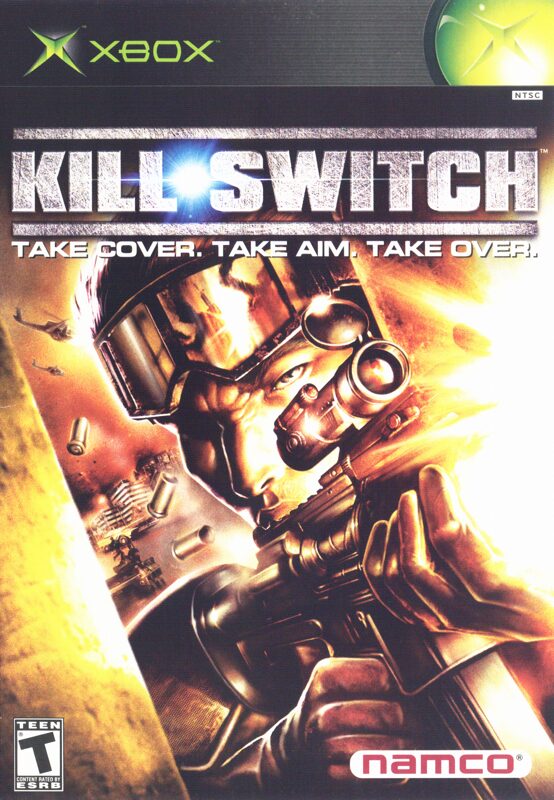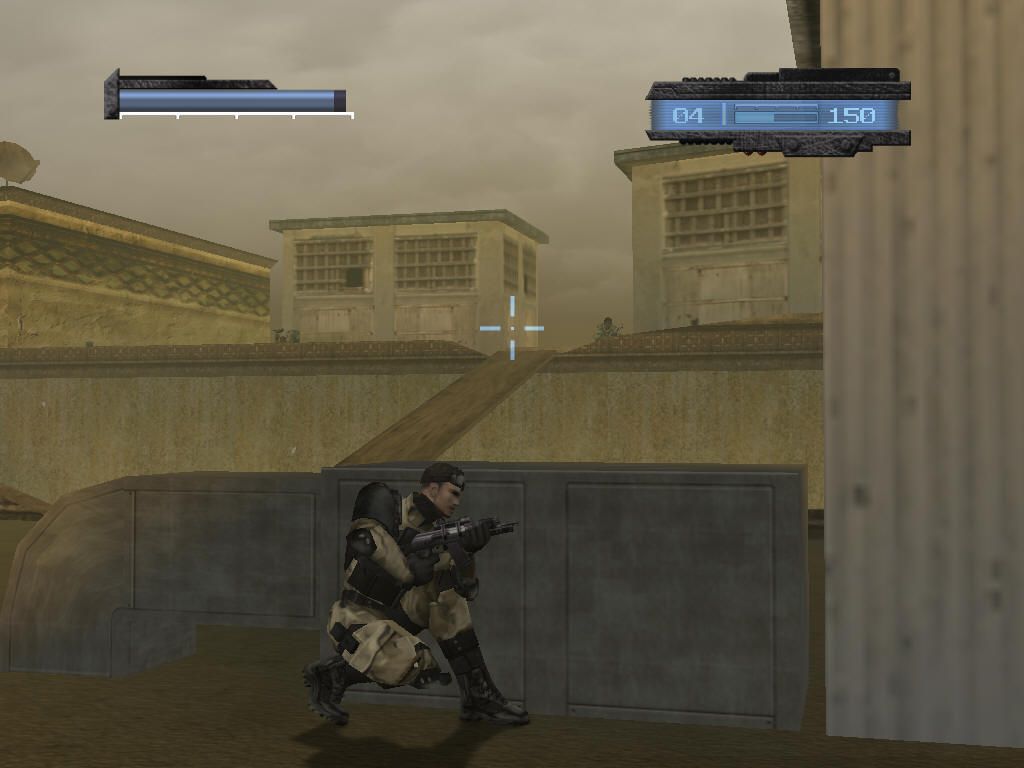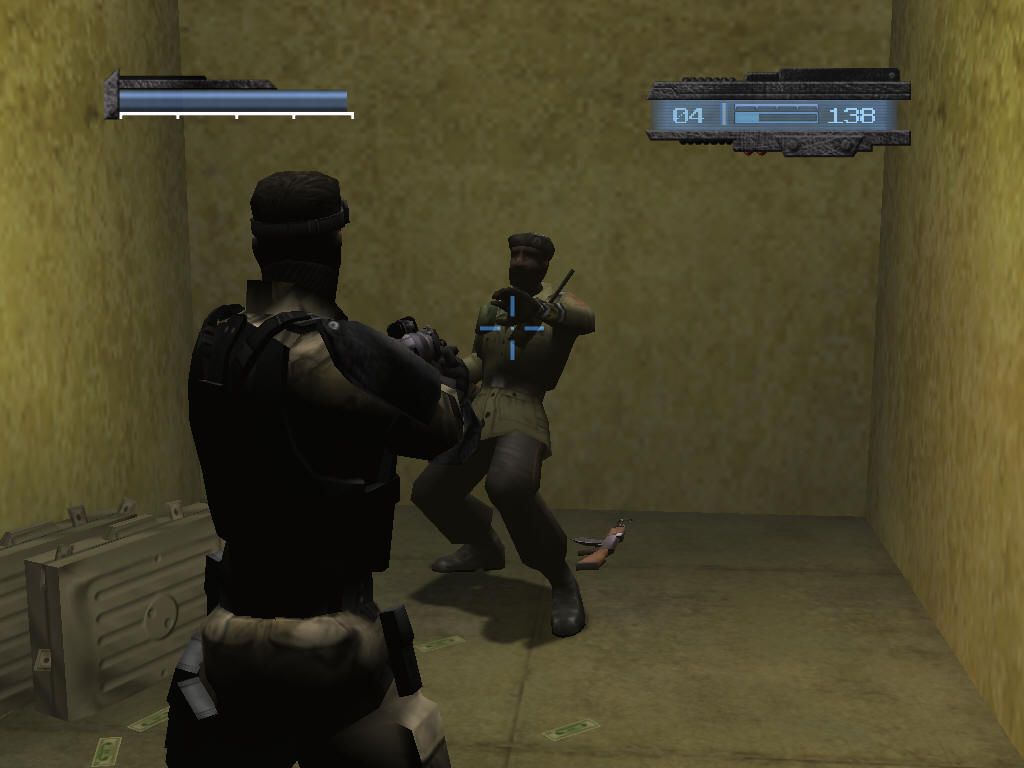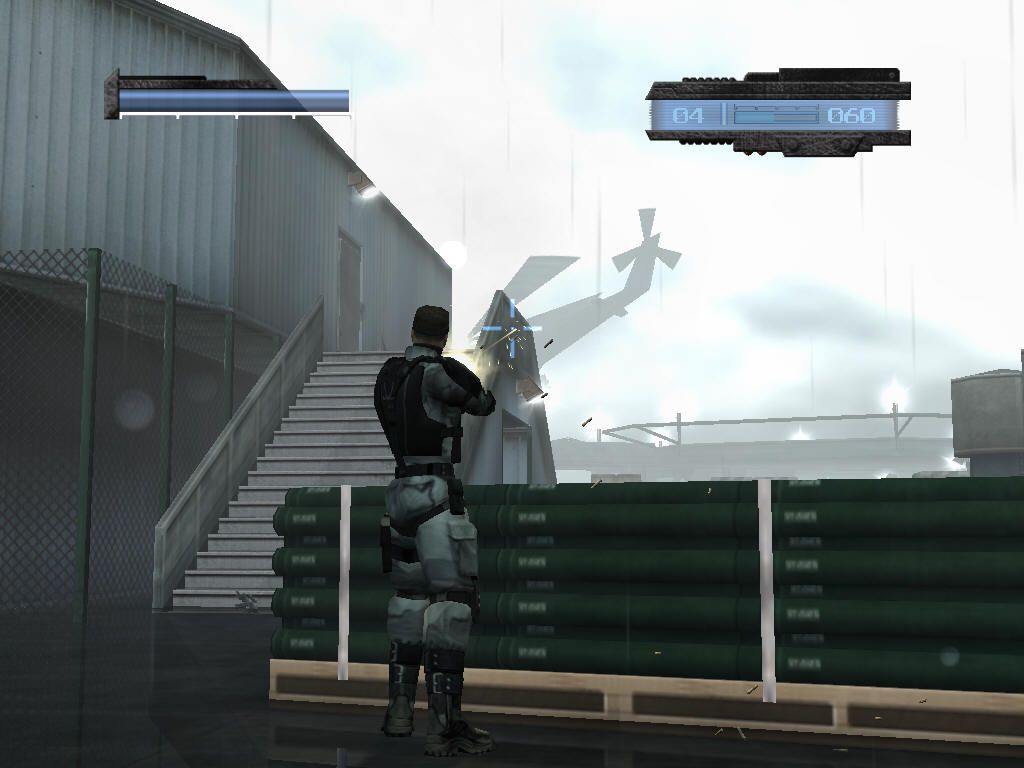Retro Replay Review
Gameplay
kill.switch stands out as one of the early adopters of a full-blown cover system, fundamentally shifting how third-person shooters handle combat. Instead of running and gunning in the open, the game encourages players to “attach” to walls, crates, and barricades to minimize their exposure. This cover mechanic can be entered and exited seamlessly, allowing you to pop out for quick shots before ducking back into safety. The sense of tactical engagement is immediate and refreshing.
Alongside the core cover mechanic, kill.switch introduces blind fire and over-the-shoulder aiming modes. Blind fire lets you suppress enemies from behind cover without fully exposing yourself, while the precision aiming mode zooms in for more accurate shots. These complementary systems reward thoughtful positioning and timing, making firefights feel more strategic than in contemporaneous shooters.
The pacing of the fifteen missions unfolds across five distinct levels, with each stage progressively introducing new enemy types, environmental hazards, and mission objectives. Whether you’re navigating tight urban alleyways or infiltrating fortified compounds, the game constantly challenges you to adapt your cover-based tactics. Occasional scripted events and quick-time sequences heighten the adrenaline, ensuring the action never becomes stale.
Graphics
For a game released in the early 2000s, kill.switch delivers surprisingly polished visuals. Character models are well-defined, with detailed armor plating and weapon textures that catch the light convincingly. Environments range from bustling city streets to dusty desert outposts, each crafted with enough variety to keep exploration engaging.
Lighting and particle effects play a major role in building atmosphere. Muzzle flashes briefly illuminate shadowy corners, while explosions send debris flying in realistic arcs. In darker levels, your cover silhouette is often the only thing separate from pitch black backgrounds, making each peek-out moment tense and cinematic.
Full-motion video (FMV) cutscenes bridge the gaps between missions, offering higher-resolution character close-ups and dramatic camera angles. While these FMVs occasionally show the limitations of early digital compositing, they nonetheless provide a welcome narrative respite from non-stop gunfights.
Story
You play as an enhanced soldier with no recollection of your identity or origin, thrust into a world rife with political intrigue and clandestine operations. The narrative unfolds in clips and voice-over dialogue as you progress through global hotspots. From urban hotspots to remote military facilities, kill.switch keeps you guessing about the true nature of your mission.
Early on, the story purposefully leans into conspiracy tropes—shadowy organizations, black-ops experiments, and betrayals by trusted allies. As you dispatch wave after wave of enemy operatives, fragments of your forgotten past begin to surface. These revelations culminate in a twist that reframes your actions and raises questions about who the real villains are.
Though the dialogue can feel a bit cheesy by today’s standards, the tight pacing of the fifteen-mission arc ensures you’re never waiting too long for the next plot beat. The FMV sequences, while not perfect, add emotional weight to key story moments, making the final revelations hit with genuine impact.
Overall Experience
kill.switch remains a landmark title for its innovative cover-based mechanics, directly influencing later blockbusters like Gears of War and Uncharted. Its tight, tactical encounters set it apart from the run-and-gun shooters of its era, rewarding strategic play and quick reflexes alike. For players seeking a methodical combat experience, it still delivers today.
There are a few rough edges—enemy AI can occasionally rubber-band or stick to cover too predictably, and some levels suffer from limited checkpoints that increase frustration if you die in a particularly intense firefight. However, these issues rarely overshadow the core thrill of ducking for cover and methodically clearing rooms.
Ultimately, kill.switch offers a focused, action-packed journey that holds up as a historical touchstone in the evolution of third-person shooting games. It may not have all the bells and whistles of modern titles, but its elegant cover mechanics, punchy pace, and intriguing narrative make it a worthy addition to any shooter enthusiast’s library.
 Retro Replay Retro Replay gaming reviews, news, emulation, geek stuff and more!
Retro Replay Retro Replay gaming reviews, news, emulation, geek stuff and more!









Reviews
There are no reviews yet.